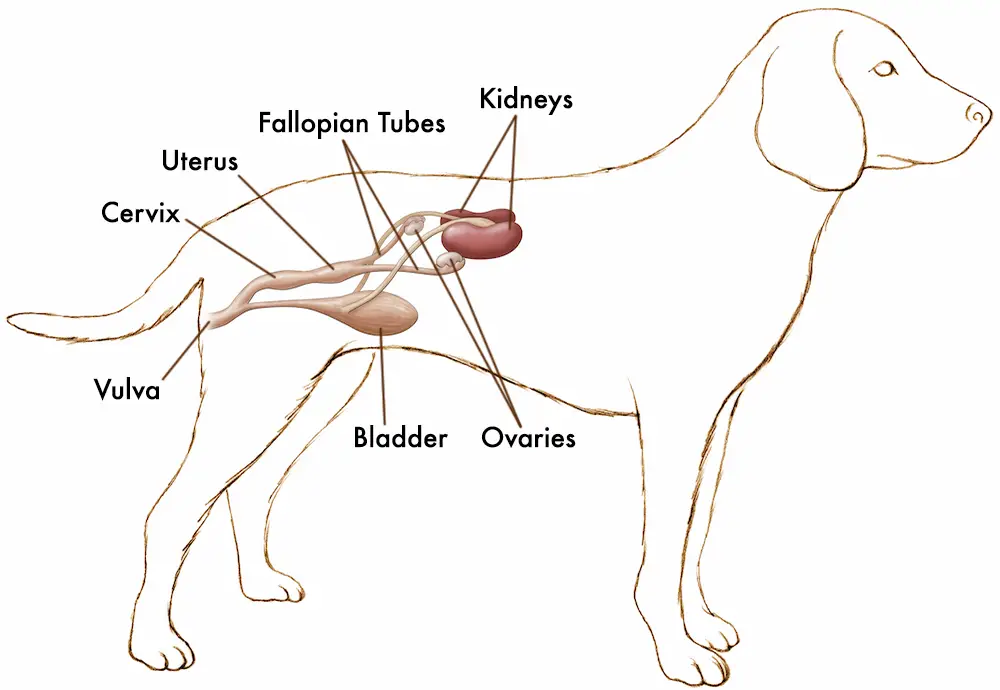Can Female Dogs Orgasm? Understanding Canine Reproduction
Can female dogs orgasm? The topic of orgasms in female dogs may seem unusual, but it’s an integral part of understanding canine reproductive behaviors and health. This blog post explores this subject, offering insights into the complexities of canine reproduction.
By learning about your dog’s reproductive behaviors, you’ll be equipped to identify potential health or behavioral issues, make informed decisions about spaying, neutering, and breeding, and appreciate the evolutionary aspects of canine reproduction.
While orgasm in animals is a field under exploration, evidence suggests potential health benefits, potentially shedding light on the evolution of reproductive behaviors and implications for humans and animals alike.
Key takeaways
Female dogs do exhibit a form of orgasm, known as a copulatory tie, during the mating process.
The copulatory tie is an evolutionary adaptation that increases the chances of successful reproduction.
Understanding the signs of the copulatory tie can help dog owners monitor their dogs during breeding.
Just like in humans, female dogs may also experience pleasure during mating, although this is still a subject of ongoing research.
The understanding of orgasms in dogs can contribute to the broader study of animal reproductive behavior and evolution.
As a responsible pet owner, it’s crucial to understand your dog’s reproductive behaviors to provide appropriate care and make informed decisions about breeding.
The four stages of the canine reproductive cycle

The four stages of the canine reproductive cycle
To better comprehend the topic of female dog orgasms, it’s essential to first familiarize yourself with the canine reproductive cycle. The cycle consists of four stages, each characterized by specific hormonal changes and behaviors:
1. Proestrus: This stage marks the beginning of the reproductive cycle. The female dog’s body starts producing estrogen, which results in physical changes such as a swollen vulva and bloody vaginal discharge. During this phase, female dogs might attract male dogs but are not yet receptive to mating.
2. Estrus: Also known as the “heat” phase, this stage is when the female dog is fertile and ready to mate. Estrogen levels drop, and progesterone levels rise. The vaginal discharge changes in color and consistency, and the female dog becomes more receptive to the advances of male dogs.
3. Diestrus: The estrus phase ends, and the diestrus stage begins. During this phase, progesterone levels remain elevated. If the female dog has mated and becomes pregnant, this stage lasts throughout gestation. If the dog does not become pregnant, the phase typically lasts around 60 days before transitioning to anestrus.
4. Anestrus: This is the period of reproductive inactivity between cycles. Hormone levels return to baseline, and the female dog will not display any signs of sexual receptivity.
The role of hormones in the canine reproductive cycle
Hormones play a crucial role in regulating the canine reproductive cycle. Estrogen and progesterone are the primary hormones responsible for the changes that occur during each phase.
These hormonal fluctuations not only affect the physical aspects of the reproductive cycle but can also influence a female dog’s behavior, mood, and receptiveness to mating.
Canine Reproductive Behaviors
The act of mating
Understanding the act of mating in dogs can provide valuable context when exploring the topic of female dog orgasms. Mating typically involves the following two main stages:
1. Mounting: During this stage, the male dog mounts the female dog from behind, positioning himself for penetration. The female dog’s body language and willingness to stand still are crucial for successful mating.
2. The tie: Once penetration occurs, the male dog’s penis swells, and the bulbis glandis (located at the base of the penis) enlarges, effectively “locking” the dogs together. This is known as the “tie” and can last anywhere from a few minutes to over half an hour. It is during this time that sperm is transferred from the male to the female.
Masturbation and other self-stimulation behaviors
In addition to mating, dogs might engage in other self-stimulation behaviors. These can include humping objects, other dogs, or even people. Such behaviors might occur regardless of whether a dog is sexually mature or not, and they are not always indicative of sexual arousal.
Instead, these behaviors can be a means of stress relief, attention-seeking, or even playfulness.
Neutered and spayed dogs’ reproductive behaviors
While spaying and neutering can significantly reduce a dog’s sexual behaviors, some dogs might still exhibit these behaviors after surgery. This can be due to various factors, such as learned behaviors or hormonal imbalances.
It’s important to note that neutered and spayed dogs are less likely to engage in mating attempts, but they might still display self-stimulation or mounting behaviors from time to time.
Can Female Dogs Orgasm?
Defining orgasm in animals
Before we dive into whether female dogs can experience orgasms, it’s essential to define what an orgasm is in animals. Orgasms are generally characterized by pleasurable sensations associated with the release of sexual tension and a series of involuntary muscle contractions, often accompanied by the release of endorphins.
Research Findings on female dog orgasms
Research on orgasms in animals, including dogs, is limited. While studies on the subject exist, there is still no concrete evidence or consensus among researchers regarding the presence of orgasms in female dogs.
It’s important to note that the lack of research doesn’t necessarily mean female dogs don’t experience orgasms; it merely indicates that more research is needed to determine whether or not this phenomenon occurs in dogs.
Why orgasms might exist in dogs and other animals
There are several reasons why orgasms could potentially exist in dogs and other animals. One theory is that orgasms serve an evolutionary purpose, as the pleasurable sensations might encourage animals to engage in mating behaviors, thus increasing the likelihood of reproduction.
Additionally, orgasms could potentially have health benefits, such as reducing stress, promoting social bonding, or even contributing to overall well-being.
Evolutionary and health benefits of orgasm in animals
As mentioned earlier, orgasms in animals could serve various evolutionary and health purposes. These benefits might include promoting reproduction, reducing stress, fostering social bonds, or contributing to overall physical and mental health.
Investigating the existence of orgasms in animals could ultimately help us better understand the evolutionary aspects of sexuality and its potential implications for animal welfare and human health.
Human Involvement in Dog Reproduction
Responsible breeding practices
As dog owners, it’s our responsibility to ensure the well-being of our pets, including their reproductive health. For those considering breeding their dogs, it’s essential to follow responsible breeding practices.
This includes researching the breed, understanding potential health issues, and ensuring both the male and female dogs are healthy and genetically compatible. Moreover, responsible breeding involves finding suitable homes for the puppies and being prepared to provide support and advice to new owners.
The role of spaying and neutering in preventing overpopulation
Spaying and neutering your dog is a responsible way to prevent pet overpopulation and protect your dog’s health. These procedures can help reduce the number of unwanted dogs in shelters and decrease the risk of certain health issues, such as mammary gland tumors and testicular cancer.
Spaying and neutering can also minimize some undesirable behaviors, like roaming, aggression, and marking territory.
The importance of monitoring your dog’s sexual behaviors
Keeping an eye on your dog’s sexual behaviors is essential for their well-being and safety. Monitoring these behaviors can help you identify any potential health issues or behavioral concerns that may require attention from a veterinarian or a professional dog trainer.
Additionally, by being aware of your dog’s sexual behaviors, you can help ensure they engage in safe and appropriate activities and interactions with other dogs or objects.
Frequently Asked Questions
Do male dogs experience orgasms too?
While research is limited, some studies suggest that male dogs may also experience orgasms. However, further research is needed to better understand the male dog orgasm and its potential evolutionary and health implications.
If a female dog does not orgasm, does it mean she cannot get pregnant?
No, orgasm is not necessary for a female dog to become pregnant. Mating and successful fertilization of eggs can occur without orgasm. It’s important to remember that whether or not female dogs experience orgasms remains a topic of ongoing research and debate.
How can I help my dog if they’re showing signs of discomfort or pain during mating?
If your dog shows signs of discomfort or pain during mating, consult a veterinarian for advice. They can help identify any underlying health issues and provide recommendations for proper care. In some cases, it might be necessary to postpone or avoid breeding altogether to protect your dog’s health.
Should I allow my pet dog to engage in sexual behaviors with other dogs or objects?
It’s important to monitor your dog’s sexual behaviors and ensure they’re engaging in healthy and appropriate activities. Consult a veterinarian or professional dog trainer for guidance on managing your dog’s reproductive behaviors.
This may include redirecting unwanted behaviors, setting boundaries, or providing alternative forms of stimulation, such as toys or exercise. Remember that responsible pet ownership includes prioritizing your dog’s well-being and safety.
Final Thoughts on Whether Female Dogs Can Orgasm
The subject of female dog orgasms remains a topic of ongoing research and debate.
While there is no definitive evidence to confirm or deny the existence of orgasms in female dogs, understanding the canine reproductive cycle and various reproductive behaviors can provide valuable context when considering this topic.
Furthermore, exploring this area can shed light on the potential evolutionary and health implications of orgasms in animals.
By gaining a deeper understanding of your dog’s reproductive behaviors, you can be better equipped to recognize any potential health concerns, monitor their interactions with other dogs or objects, and make informed decisions regarding spaying or neutering.
This knowledge can help promote your dog’s well-being and contribute to a happier, healthier relationship between you and your canine companion.
As responsible pet owners, it’s our duty to prioritize our dogs’ health and safety. This includes staying informed about their reproductive behaviors, making responsible breeding decisions, and considering the benefits of spaying or neutering.
Ultimately, by taking an active role in our pets’ reproductive health, we can help ensure their overall well-being and happiness.







